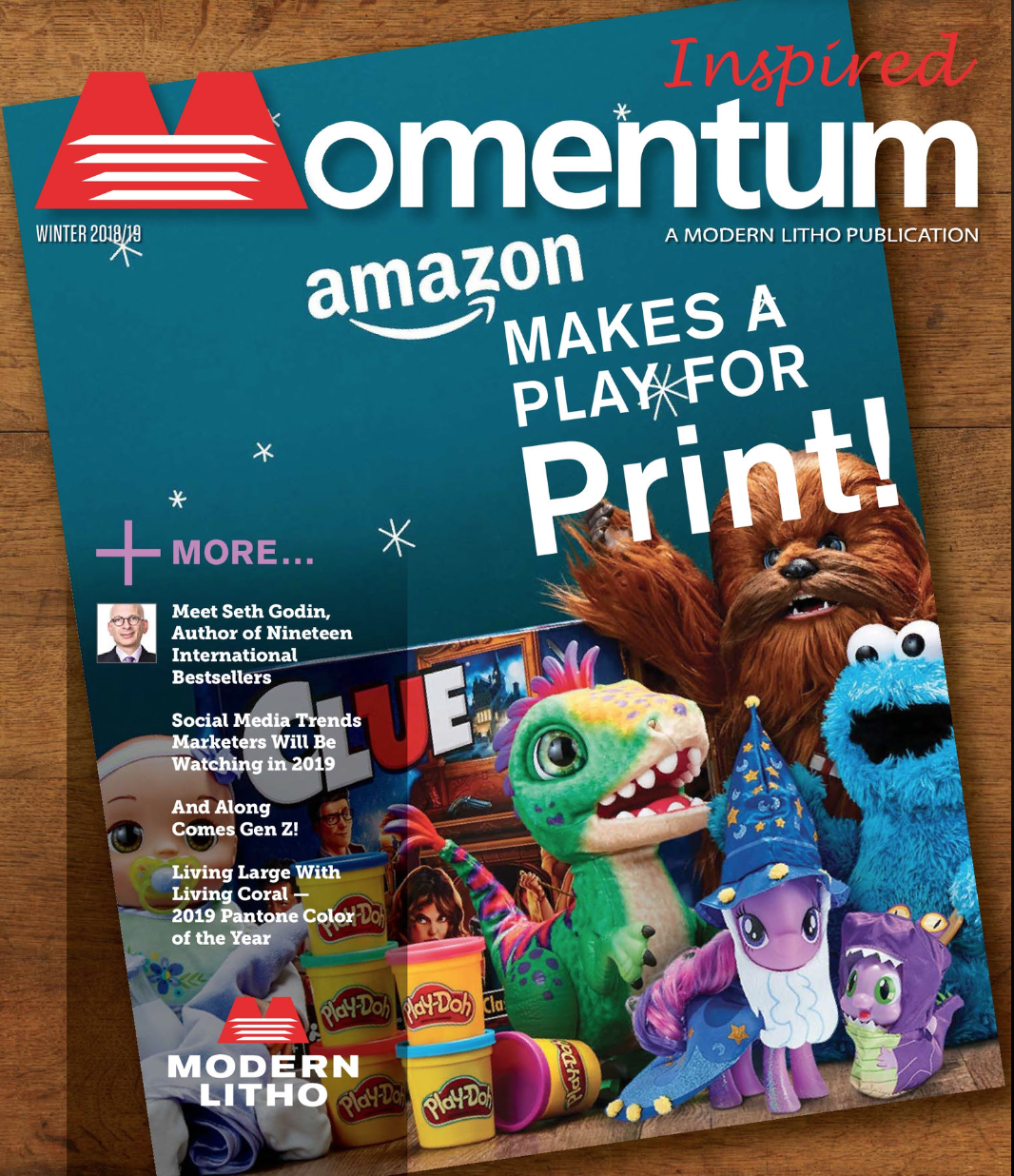Marketing to Gen Z
Feature story for the CMO Group, published in 2019 and based on interviews with several generational experts. Story below.
You have, quite literally, two billion reasons to concern yourself with the generation of young people following behind millennials. That’s the number of people globally that make up Generation Z—generally thought of as the group born after 1994. And that amounts to 25 percent of the earth’s population.
If that scares you a little bit because you’re just starting to figure out what makes millennials tick, you’ve got less than a year to get over your fears. By 2020, Gen Z will make up 40 percent of U.S. consumers. They already spend $44 billion annually and they influence $600 billion in annual family spend, which will make perfect sense to anyone with a teenager and a refrigerator.
“The unprecedented sociological behaviors of this particular generation, largely driven by technology, are defining who and what is most influential in the marketplace today,” says Nancy Nessel, a marketer and parent of tweens who six years ago identified the highly unique sociological behaviors among this emerging generation as an expert on Gen Z. “Through technology and social media, Gen Z consumers have immediate access to amplify their voice, along with the creativity and the entrepreneurial drive to become major influencers. For example, an entrepreneurial Gen Z can become a celebrity overnight by creating their own YouTube channel and selling their own merchandise.”
A study by The Center for Generational Kinetics supports this thinking, finding that Gen Z (ages 13-22) is redefining who is influential in today’s marketplace. The same study found that 46 percent of these young people follow more than 10 online influencers, and that 10 percent of them follow 50 or more. Nessel, who previously worked in brand management and marketing for leading consumer brands and now writes about Gen Z on her website gettinggenx.com, says that this popularity of influencer marketing has already flipped advertising on its head.
“Many brands are chasing consumers from channel to channel,” she says. “Others brands are repositioning themselves to have stronger appeal to young consumers.”
Nessel believes the latter is the wiser strategy, adding that a brand’s positioning needs to be solid yet clearly segmented among the very different aged consumers. She points to Ralph Lauren’s recent clothing collaboration with London’s-based skate brand Palace as a prime example of reaching younger consumers without diluting the iconic brand of Ralph Lauren. While the collaboration gave Palace access to Ralph Lauren’s huge audience, it also brought Ralph closer to the youthful streetwear segment.
Nessel has worked with clients ranging from Major League Baseball’s Chicago White Sox to ALDO shoes to Nissan. No matter the client or the industry, all want to know what their future consumers look like—what will they wear and drive, where will they work and how do they want to communicate with a brand and with each other.
“A frequent question I ask Gen Z in focus groups is: How would you like to interact with this product?” Nessel explains. ”Often brands are surprised to hear that Gen Z demonstrates some more traditional qualities than we’d expect. For example, many want some face-to-face communication in a work or school setting and many express the need to have control over information that is fed to them.”
The good news for brands learning new ways to connect with a younger audience is that this audience is more interested in them than the Millennial generation just ahead of them. The study by The Center for Generational Kinetics uncovered that 73 percent of Gen Z follow at least one brand on social media compared to 64 percent of millennials. In fact, 52 percent of Gen Zs follow three brands or more. On the other hand, Nessel reports that Gen Z has caught on to the dangers of sharing too much information and they are thus more concerned about data privacy, meaning brands must strike a balance between being overt and subtlety.
“Brands will have to work harder to retain Gen Z followers who prefer to select which brands to follow than be selected by a brand,” she says. “Gen Zs do not want to feel ‘stalked’ by brands that over-market to them. So brands need to study what’s working in the influence world and take that to platforms outside of YouTube channels. Brands can learn a lot from online influencers who are selling their unique merchandise so successfully. For example, the personality of the influencer is selling the merch. The unique design helps sell the merch. The youthful appeal helps sell the merch.”
One challenge in marketing to Generation Z at this moment in time is that, unlike Millenials, there aren’t many people from Generation Z in the workforce. If you’re company is trying to market to Millenials, you can hire Millenials who might better understand their contemporaries. That’s tough to do with Gen Z because the oldest of them are just 22 years of age. Nessel says that as they generally thrive on attention, Gen Zs are often quite willing to speak to marketers and market researchers about their buying preferences through focus groups, online surveys and sharing their opinions in social media.
“We can also interview vloggers about their fame,” she says “For the younger Gen Z, you’d have to ask the parents and the children together. For those under 14, many of the parents still make purchases for their children—approving and paying for items. And Gen Z is very influential on household purchases; many parents go to or rely on Gen Z to make purchase decisions.”
So, what do you need to know about the purchase behavior of this generation that is largely not yet old enough to earn a living? The first thing that might surprise older marketers that have had a difficult time understanding millenials is that this next generation places great importance on getting value for their money. You might be thinking: “That’s because they don’t have any yet,” and you might be right. But there’s more to the story. Nessel points to three main causes for their value-based spending habits.
First, the oldest of Gen Z were born in 1996, about the time the internet became mainstream. They grew up with 24/7 exposure to global disasters and the 2008 recession streaming live on screens everywhere. “This kind of exposure has caused some resiliency, anxiety, altruism and definitely frugality,” Nessel explains. “Having seen the harsh economic, political and natural disaster realities of life up close, and likely at too young of an age, Gen Z is more realistic than other generations.”
Second, they have been raised mostly by Gen Xers, usually in a house where both parents work. One parent may have lost a job or the family may have lost a house in the 2008 recession. “Gen Z sees their parents struggle to pay for life plus technology plus college,” Nessel says. “Gen Z realizes the importance of money.”
And finally, Gen Z has learned that materialism doesn’t buy happiness. “Comfort, experiences and meaningful causes mean more to Gen Z than money,” Nessel says.
Armed with this kind of intel, brands must soon learn how to integrate this new generation of workers into their companies. And they will not be the same workers that Millenials are. While Millenials and technology helped to eliminate the boundary between personal and professional life and paved the way for employees to have greater work/life balance, they also came into the workforce with such high demands that they’ve scared off employers. They expected extra vacation time, work-from-home days and sabbaticals to travel the world, baffling leaders that were often old enough to be their parents.
Those leaders, if they are still in charge, will be happy to know that Gen Z has very different attitudes and expectations from an employer. While a Millennial may view the employer as the lucky one to have them as an employee, Nessel says Gen Z employees will often come with a greater level of respect and gratitude for employment, the opportunity and the income. They even relish personal interaction in the workforce so they’re more inclined to come into the office.
In addition to the period of history we’ve grown up in, many of our generational attributes can be traced to how we were raised and who raised us. Gen Zs were reared differently than Millenials, who were raised differently than Gen Xers. Gen X is raising Gen Z to be independent, while Baby Boomers raised Gen Y to be more dependent on their parents. Many would say they have been quite coddled. That’s not necessarily the case with Gen Zs.
“We hear about the consequences of the Boomer parenting style all the time—Millennials living at home in their late 20’s and being incredibly challenging to work with,” Nessel says. “Gen X witnessed this problem with the Boomers and their demanding offspring, so most Gen X parents have chosen or have been forced to raise their children to be more independent.“
Remember, however, that while Gen Zs may act and look like little adults, they are still young and in need of guidance and direction to become good citizens. Nessel, a parent of two teen Gen Zs, says her generation hasn’t overindulged their children. One of her proudest moments was sending her eldest off to college knowing how to fully function, engage with all kinds of people and thrive as an independent adult.
“I hope companies research and prepare for Gen Z entering the workforce and don’t assume Gen Z wants to work like Millennials,” she says. “I think we’ll all be delighted by Gen Z’s hard-work, integrity, loyalty, teamwork and communication skills. They developed these skills while growing up in challenging times.”
5 brands and people doing Gen Z right
Looking for a few examples of brands that are communicating effectively with the youngsters. We asked Nancy Nessel to share five brands that she believes “get” Generation Z. Here’s her list.
Supreme — The American skateboarding shop and counterculture clothing brand started in New York City in 1994. Nessel says they do a solid job positioning themselves as unattainable and high-end and with their “drop strategy” which involves release their latest offerings on a given Thursday in very limited quantities. Lines stretch around the block waiting to enter the store.
Uniqlo – The Japanese casual wear brand is adored by Gen Zs for its affordability and comfort. Once a juggernaut mostly in Japan, its sales in the final quarter of 2017 were higher outside of its home country than inside it for the first time ever. It has made its name on less expensive jeans, socks, and sweaters but is still looking to gain popularity in the U.S. beyond New York.
Lululemon — Viewed for many years as a women’s only yoga brand, Nessel says Lulu has bolstered its following with young male followers in recent years, while remaining strong with young women. Gen Z’s affinity for living a fit lifestyle and eating right also align well Lululemon’s athleisure attitude.
Gucci – Off the back of its popularity with rappers, Nessel says Gucci has regained popularity with Generation Z, who also likes old-school logos. The brand also aligns with celebrities from modest background to identify with young people, despite the fact they need to save mightily to afford it.


